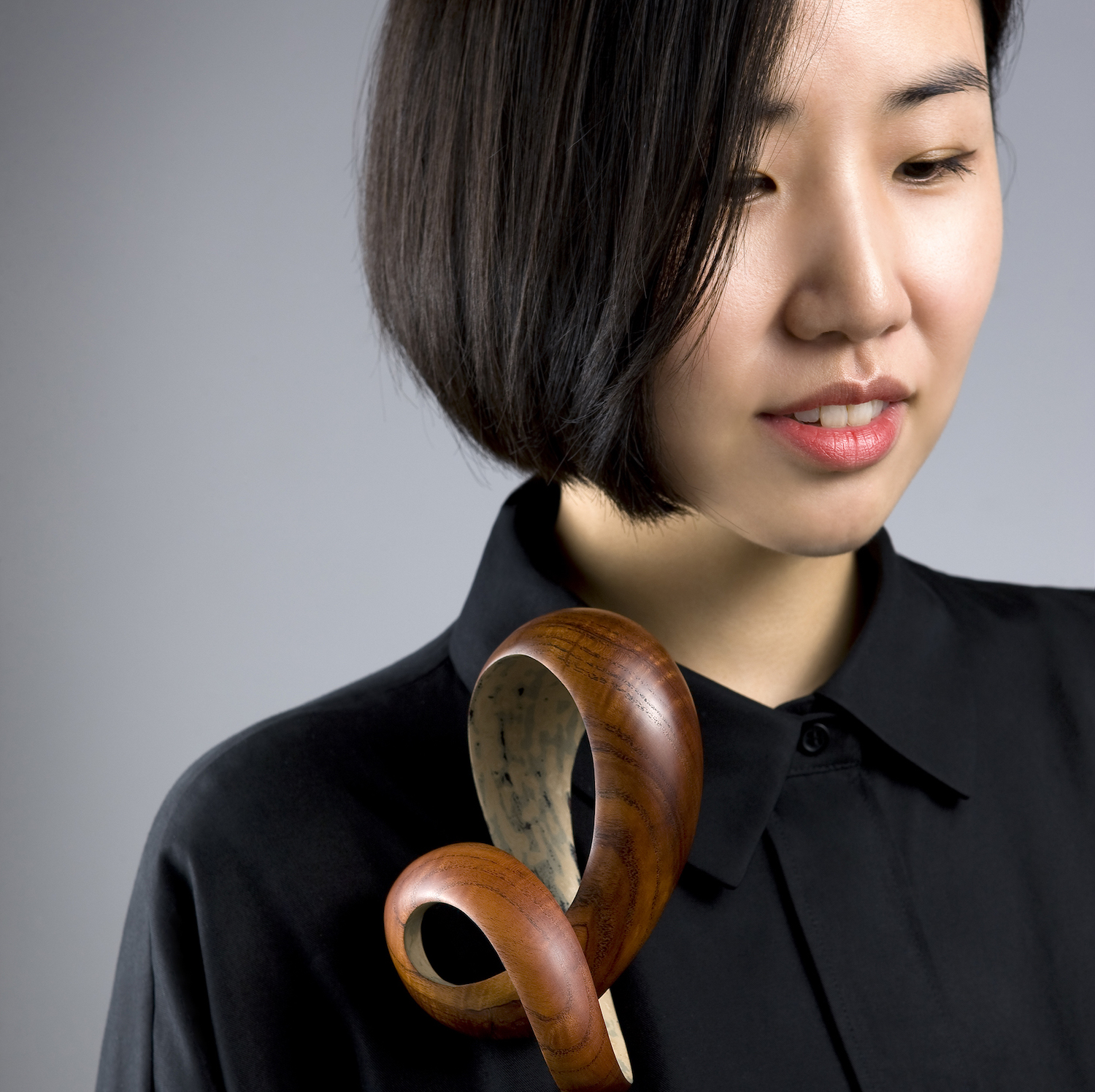
Joo Hyung Park
Joo Hyung Park is an applied artist and contemporary jewellery maker living and working in South Korea. She integrates pieces of cutlery in wooden or metal surfaces as if they were soft and bendable. The tableware sculptures are intended as snapshots of the actual moment of eating. By transforming and combining chopsticks, spoons, forks and bowls, she does not only harmoniously unite European and Asian culture, but also transforms culinary utensils into a visual experience.
What was the inspiration for your Steinbeisser pieces?
It has always been the moment of pleasure to use our hands. I desire to capture the moment that gives us pleasure by using our hands, and make that moment into something else.
Describe your work in 3 words!
Hands. Moment. Pleasure.
Which conscious lifestyle choices are you making? And are you considering any new ones?
I have been avoiding using leather, fur, and any materials that come from animals for both my work and my life since 2013. Also, I am a pesco-vegetarian trying to be a vegan one day. I know the best thing I could do for the earth is not existing, but since the existence already happened, finding the balance between my life and the earth’s is the job.
What have you rebelled against in the past, and what are you rebelling against now?
If I had to choose one, it would be practicality. I was originally trained as a jeweller and since jewellery needs to be on the human body, there were things that I had to consider such as wearability. However, from my point of view, when an object is beautiful and gives us joyful excitement just by looking at it, it fulfilled its duty as a creation. Nowadays, I make cutlery and tableware more than jewellery, so it moved on from wearability to practicality. When people see my cutlery, the first question is “what is it” and the second question is “are they comfortable to use”. I then explain that some of my cutlery are unexpectedly easy to use despite how they look, and some are usable but not as comfortable as other ordinary cutlery. Practicality is very important when something has expected functions, but I decided not to let it be potential drags to my idea. My pieces show the moment when we use cutlery with our hands. When they are laid on a table, they still have the forms of being in use. We use that very moment to deliver food to our mouth which, in my mind, is completing the duty of cutlery. With the cutlery pieces, I wish to tell the story of how my hands seized the moment, and made that moment into new cutlery. There are more than thousands of comfortably usable cutlery out there. Why do I have to make one of those? It is also the reason why I love the Steinbeisser project, it encouraged me to be more experimental and not to think practical.